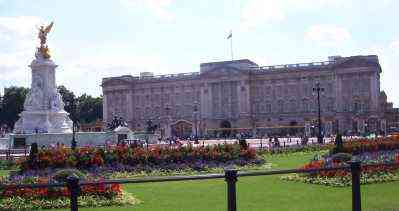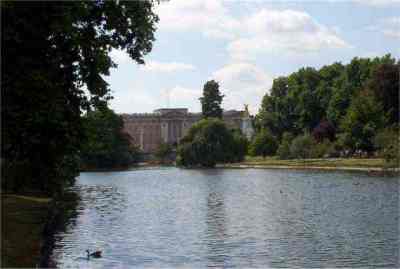
|
||
Buckingham Palace London Queen Elizabeth II's Official Residence.Buckingham Palace has hosted many historic events in its time. It is home to Queen Elizabeth II. A visit to London is just not complete without a visit to the palace. There are many different parts of the palace that are worth seeing. Many Kings and dignitaries visit and many investitures (awards ceremonies) take place here. Its history dates back many centuries. It has been a plantation and a home in its time. Many different monarchs have had a hand in changing it into the Palace we know and love today. Must See London AttractionEvery first time visitor to London has got to see Buckingham palace. It is the worlds most famous address and has been the backdrop for some of the worlds most famous events. From the VE day celebrations, the Coronation, more recently the Jubilee and Princess Diana's funeral. The Palace has set the stage for national and international events. It is the official London home of H. M. the Queen Elizabeth II. Also the working offices of many of the Royal family. What to See at Buckingham PalaceThe Palace has around 600 rooms and some 20 hectares of Garden. The Garden has its own artificial lake complete with real flamingos. The Mall, in front of the palace, was until Victoria's reign a private road. The state rooms are open to the public during the summer months of July and August. Her Majesty is not in residence at these times. They are well worth visiting, especially the Ballroom, where state banquets for visiting dignitaries are held. The Throne Room (where investitures are held) and the Blue and White Drawing Rooms are a must. The Queens GalleryAdditionally the Queens Gallery is well worth a visiting. This is where parts of the priceless Royal Collection can be viewed (the exhibits are often changed). Paintings by Rembrandt, Rubens, Vermeer, Poussin, Canaletto and others can be seen here. Some say the Royal collection makes the paintings in the National Art Gallery look like the cast offs. Furniture and sculpture can also be seen here. Royal MewsThe Royal Mews (No, it isn't where the Queen keeps the royal cats) on the south side of the palace is worth a look if you have time. Here is where the collection of Royal carriages are kept. Changing of the GuardThe changing of the guard takes place at the palace every day from April to September. During October to March it takes place every other day. It is free to watch. Make sure you get there early in order to get a good viewpoint. Who knows, you might even get a glimpse of Queen Elizabeth II if you are lucky. Where the Good and the Great VisitBuckingham Palace is a working home. It is to here Presidents and Kings visit. Also Ambassadors and Ministers meet the monarch here. Ambassadors to the UK are accredited to the sovereign and not the government. Also, it is here that the great and the good go, to receive Honours and awards at investitures. These events are held throughout the year. The Queen holds garden parties in the summer here. These are a thank you to those who help or serve in the community. Before Buckingham PalaceBuck palace began as the site of the Royal Mulberry plantation in the reign if King James I (1603-25). James I wanted to produce his own silk, however England was far too cold and wet for it to succeed. So, the site passed to the Dukes of Buckingham who were Royal favourites and advisors. The Duke of Buckingham built a house on the site in 1703. It was close enough to London and the court and yet at the same time was in the countryside, away from the noise and the dirt of the city. History - Home of the Queen for CenturiesIn 1761 King George III bought the house for his wife, Queen Charlotte. It was to be used as a comfortable family home away from the court life of St James's palace (George and Charlotte had 15 children). The house was remodeled according to the designs of William Chambers at a cost of 73, 000 Great British Pounds. It was known as the Queens house or as Buckingham house. The palace is still referred to as Buck House. George IV Turns a Home into a PalaceGeorge 4th (formerly the Prince Regent, the one who built Brighton Pavilion) had the house reconstructed on a far grander scale. He turned it into a palace, at a princely cost of 450 000 GBP. His architect was John Nash and the whole building was rebuilt in the neoclassical style. Marble Arch, which was constructed to celebrate the victories of the battle Trafalgar (1805), and the battle of Waterloo (1815) was the entrance to the new palace. It was later moved in Victoria's reign to Hyde park being too narrow for coaches. William IV and Queen Victoria Make Their MarkIn 1830 George 4th was succeeded by his brother King William 4th (Silly Billy), who replaced Nash with Edward Blore because of the mounting bills. Queen Victoria came to the throne in 1837. She was the first monarch to use the palace as the official residence of the sovereign. Victoria was the first to leave the palace for a coronation. Since then, all monarchs been crowned in Westminster Abbey. The Palace was far too small for the newly married Victoria and Prince Albert and the last major phase of building was completed in 1847 at a cost of 106 000 British pounds. The now famous forecourt is relatively modern being constructed along with the Victoria memorial in 1911. In 1913 the front of the palace was crumbling, and the decision was made to reface the front in Portland stone. |
||



